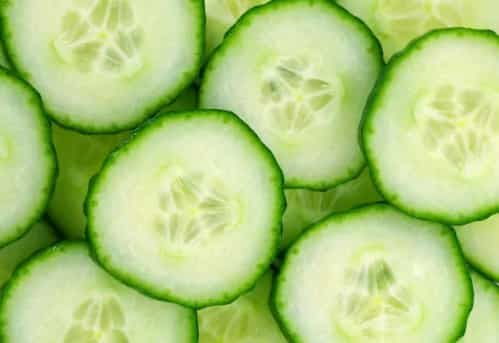Both cucumber and zucchini have a relatively low glycemic index, making them popular among people who wish to lose weight quickly. Both of them are extremely low in sugars, carbohydrates, and calories yet abundant in vital nutrients because of their high water content. Here are some differences that set these two apart.

1. Appearance
Although similar in size and colour to cucumbers, zucchini have woody stems at one end and occasionally a flower at the other. These are the female flowers of the plant, which develop into a big golden blossom and are occasionally consumed as well. Both the zucchini and the cucumber have seedy flesh when cut open, but the zucchini's flesh has more of a creamy white colour. The cucumber's flesh has a faint green tint. In contrast to zucchini seeds, which are tiny and blend into the flesh, cucumber seeds are typically visible running down the middle of the fruit.
2. Taste
While zucchinis are typically cooked, cucumbers are typically eaten raw. However, zucchini can be consumed raw or pickled, while cucumbers can also be cooked. Cucumbers are juicy and have a fresh flavour thanks to their high water content. However, zucchinis have a more robust flavour and may even have the tendency to be a little bitter. Cucumbers easily wilt when cooked, whereas zucchini maintains its shape better. Cucumbers will preserve a slight crispness when cooked, whereas zucchini turns soft when cooked. It's also vital to remember that cucumber flowers cannot be eaten, but zucchini flowers are edible.
3. Touch
When compared to zucchini, which are warmer and yielding with a subtle grittiness, cucumbers are often rigid, waxy, and cool to touch. Zucchinis have a dry, rough skin compared to the cold, lumpy exterior of cucumbers.
4. Nutritional value
The zucchini and cucumber actually have comparable low-calorie counts. In comparison, cucumber has 12 calories without its skin and 15 calories with it in a 100g serving whereas zucchini contains 17 calories in a 100g serving. One noticeable quality of zucchini is that it contains a lot of vitamin C. The skin of the cucumber, which has fibre and the antioxidant beta-carotene, is the most nutrient-rich component. Both veggies also include small amounts of magnesium, potassium, and vitamin K.
5. Plants
While both plants have heart-shaped, big leaves, cucumbers dangle from their stems like grapes from a vine, whereas zucchini protrude from the plant.


